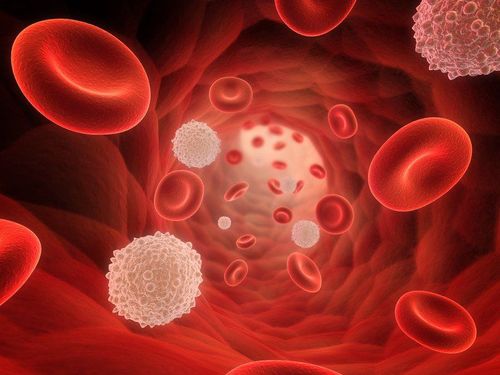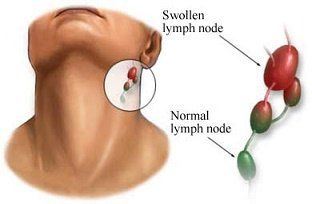This is an automatically translated article.
Ultrasound-guided fine needle aspiration cytology of the spleen is the most commonly indicated technique in the diagnosis of suspected lymphoma. To do this, your doctor will use a small, hollow needle through the cell to drain fluid. The small sample of cells collected will be sent to a laboratory for examination under a microscope.
1. What is the ultrasound-guided splenic needle aspiration technique?
Fine needle aspiration cytology is a technique that uses a small, hollow needle to penetrate the skin into a lesion with the aim of extracting fluid from a tumor, small sample of cells or an organ under the skin.
The spleen is a vascular organ surrounded by the peritoneum. The most common lesions of the spleen are lymphoma, metastasis, or infection.
Ultrasound-guided fine-needle aspiration of the spleen is the most commonly indicated technique in biopsies to support the diagnosis of suspected lymphoma. The doctor will use a small, hollow needle through the cell to drain fluid. The small sample of cells collected will be sent to a laboratory for examination under a microscope. This is a very useful technique for detecting cancer.
2. Indications and contraindications for ultrasound-guided spleen aspiration
Splenic fine needle aspiration technique under ultrasound guidance is indicated in the following cases:
When the doctor suspects that there is a splenic metastatic lesion; Diagnose primary lymphoma in the spleen or spleen as the primary organ of injury; Patients with new lymphoma with lesions of the spleen should use ultrasound-guided fine-needle aspiration to rule out other pathologies such as malignant transformation, necrosis, or infection; Indications for fine-needle aspiration cytology of the spleen under ultrasound guidance to rule out infection in an immunocompromised patient. Spleen needle aspiration cytology under ultrasound guidance is contraindicated in the following cases: Uncooperative patients such as young children, delirium or psychopaths; People with severe coagulopathy; Having a systemic disease, a disease with a respiratory or cardiovascular disorder; This needle biopsy technique is also contraindicated in cases where the patient has lesions located too deep or in the hilum of the spleen.

Chọc hút tế bào bằng kim nhỏ lá lách được chỉ định phổ biến nhất trong chẩn đoán nghi ngờ u lympho
3. Steps to perform spleen needle aspiration technique under ultrasound guidance
Step 1: Prepare ultrasound machine with specialized probes; printing paper, photo printer, image storage system; sterile nylon bag wrapped ultrasound transducer; local anesthetic; antiseptic solution for skin and mucous membranes; medical supplies (5 and 10ml syringes, distilled water or physiological saline, specialized aspiration needles, specialized biopsy needles, .....) Step 2: Select the location of the entrance to aspirate the cells needed ensure two principles, which is the location closest to the tumor (determined by ultrasound) and the safest (identify the needle path, avoid the blood vessels identified by the ultrasound). Usually use about 10-12 ribs above the mid-axillary line. Step 3: Mark the location of the safe entrance by the ultrasound doctor to locate the lesion. Then disinfect a large area of skin at the needle puncture site, spread the hole and sterilize the transducer. Step 4: Anesthetize the puncture site with Lidocaine in the direction of the tumor from the skin to the peritoneum, under the spleen. After that, wait for the anesthetic to take effect, then use a surgical knife to make a small hole in the skin, under the skin until the muscle layer is marked. Step 5: Coaxial needle puncture as well as ultrasound to determine the needle tip. At the same time, let the patient take a deep breath, pause breathing, and adjust the needle so that it stops in the direction of the lesion to the outer edge of the pathology. Finally, withdraw the needle core. Step 6: Cut the tissue by activating the biopsy gun, then insert the coaxial needle barrel and push the needle core. The missing core will enter within 10-20mm. The outer barrel is activated to move forward for the purpose of cutting and retaining the concave inner column of tissue. Step 6: The doctor withdraws the needle, and at the same time inserts the coaxial needle core to avoid bleeding. The needle biopsy gun needs to be activated to remove the tissue from the defect. After determining the necessary number of samples and confirming that there is no bleeding by ultrasound, the coaxial needle is withdrawn and the local compression bandage is applied. Place the biopsy tissue in a vial containing formalin solution, assess the rupture of the biopsy tissue and send the results to the laboratory.
4. Complications and management when performing the technique of small needle aspiration of the spleen under ultrasound guidance
Splenic fine needle aspiration technique under ultrasound guidance can lead to some complications. When a stroke occurs, it should be handled by:
Hemorrhage: This complication is uncommon and mild. To minimize the risk of bleeding, the physician needs to adjust the coagulation factors, when performing aspiration, avoid penetrating too deeply into the spleen parenchyma. At the same time, use material that obstructs the passage of the biopsy needle. Pneumothorax: In case of small pneumothorax, the patient usually has no symptoms. Should follow up and check chest X-ray after 2 hours. If the pneumothorax is stable, the patient may be present, but the patient should be monitored for increased pain or dyspnea. To ensure safety and get the most accurate results, patients need to go to a reputable hospital to conduct a small needle aspiration cytology of the spleen under ultrasound guidance. Currently, Vinmec International General Hospital is one of the leading prestigious hospitals in the country, trusted by a large number of patients for medical examination and treatment. Not only the physical system, modern equipment: 6 ultrasound rooms, 4 DR X-ray rooms (1 full-axis machine, 1 light machine, 1 general machine and 1 mammography machine) , 2 DR portable X-ray machines, 2 multi-row CT scanner rooms (1 128 rows and 1 16 arrays), 2 Magnetic resonance imaging rooms (1 3 Tesla and 1 1.5 Tesla), 1 room for 2 levels of interventional angiography and 1 room to measure bone mineral density.... Vinmec is also the place to gather a team of experienced doctors and nurses who will greatly assist in diagnosis and detection. early signs of abnormality in the patient's body. In particular, with a space designed according to 5-star hotel standards, Vinmec ensures to bring the patient the most comfort, friendliness and peace of mind.
Please dial HOTLINE for more information or register for an appointment HERE. Download MyVinmec app to make appointments faster and to manage your bookings easily.













